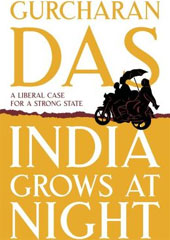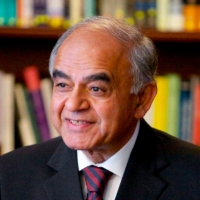India: Confessions of a Disillusioned Libertarian
Will the political class of India step up or will the Indians themselves need to reform government and rid it of corruption?
January 12, 2013

I grew up in the idealistic days after India’s independence in the 1950s. Back then, we passionately believed in Jawaharlal Nehru’s dream of a modern and just India. We were mostly socialist then. As the years went by, we found that Nehru’s “mixed economy” was taking us to a dead end.
Instead of socialism, we had ended with statism. We sardonically called it “licence raj.”
For me, those four decades of missed opportunities were filled with personal humiliation, as I narrated in my book India Unbound. Thankfully, the reforms in 1991 ended the agony. Indians finally gained economic freedom and India has risen ever after.
As a result of the pain and scars of the “licence raj,” I turned from a socialist to a libertarian in India. I became passionately committed to the cause of individual freedom. But even I could not imagine how quickly Indian entrepreneurs would respond and create innovative, red-blooded firms.
They competed brutally at home and began to stomp onto the global stage. I began to believe that the state was “a second-order phenomenon.” It was at best protecting what people choose to do in private life and at worst capable of destroying those freedoms.
I felt a “laissez faire” policy with a limited government would do the least harm to human beings. I celebrated the heroic idea that India was rising despite the state.
I also believed that if we kept reforming our economy, prosperity would continue to spread, corruption would decline and governance would improve as the discretionary authority of officials declined.
Now, two decades later, I have realized that I may have been wrong. I am convinced that the state is of first-order importance. It can either allow human beings to flourish or it can become the biggest obstacle to their realizing their potential.
A laissez-faire state, like a completely free market, has never existed. So the real issue is the extent and quality of government regulation. The state achieves this primarily by protecting human liberty, striving for an equality of opportunity, but most of all by guaranteeing a predictable rules-based order.
My conversion to the cause of the state came about by seeing the nation turning middle class, but achieving that only on the basis of the most appalling governance. How could a vibrant democracy, with a rising economy and an energetic civil society, have allowed governance to decay in this way?
In the midst of a booming economy, Indians despair over the simplest public goods. Where the state is desperately needed — in providing basic education, health care and drinking water — it is performing dismally.
Where it is not needed, it is still hyperactive. Its specialty is to stifle enterprise via red tape and the “inspector raj.”
The final blow was the economic slowdown after 2010. This was partly caused by a weak, corrupt and incompetent governing coalition led by the Congress Party. I realized that India might have finally hit a wall and begun to experience the limits of “growing without the state.”
For India’s future, it is pivotal not to succumb to the peculiar fantasy of the American Right that a nation’s success derives simply from keeping the government out of the way.
In the past two decades, good regulators have contributed to India’s economic success, just as bad regulators have impeded its growth.
For example, the Securities and Exchanges Board of India (SEBI) has brought transparency to capital markets. The Reserve Bank of India (RBI) has become less arbitrary in its oversight of banking. The telecom revolution was ushered by its conversion to a revenue-sharing model, ably supported by the first telecom regulator.
On the other hand, power reforms failed because of spineless and incompetent regulators.
I had optimistically assumed that, as the reforms continued, India would reach the high-income levels of the West and Japan. I now realize that this will not happen unless the country fixes its institutions of governance.
If it does not do so, India will be caught in a “middle income trap” like Latin America, which lost decades for the same reason.
Historically, a weak state
It is a mistake to think that the Indian state has weakened only in recent times because of coalition politics, weak leadership and economic liberalization. India has historically had a weak state. But it has always had a strong society.
The average Indian has been defined by his place in that hierarchical society. It is quite unlike China, which has had a strong state and a weak society.
Hence, India’s history is one of political disunity with constant struggles between kingdoms, while China’s history is one of strong empires. The type of despotic and intrusive governments that emerged in China, which divested people of their property and their rights, has never existed in India.
The king in Indian history was a distant figure and hardly touched the life of the ordinary person. The law, “dharma,” preceded the state and placed limits on the king’s power in pre-modern India.
The king did not give the law as he did in China. Dharma was above the state, and the king was expected to uphold it for the benefit of the people. The king also did not interpret the law, as in China. The Brahmin or the priest interpreted the law.
It was on this basis that a liberal division of powers was created early in India and this may have contributed to a weak Indian state at birth. But it also prevented oppression by the state.
Given this past, it is not surprising that, after independence, India went on to become an untidy democracy rather than a tidy autocratic state. And in the 21st century, true to character, India is rising from below, quite unlike China whose success has been scripted from above.
China is an amazing, technocratic state that has built extraordinary infrastructure. It is also not surprising that India’s traditionally strong society is evolving into a vibrant civil society.
Anna Hazare‘s movement in 2011 is only the most recent example of a historically weak state colliding with a strong society. A successful nation needs both a strong state and a strong society to keep a check on each other.
What is to be done?
Anna Hazare’s movement has proven that crowds might awaken people, but they do not achieve the overriding goal of clean government.
Instead of chanting multitudes inspired by a mystical faith in the collective popular will, reaching that goal will require the hard work of politics.
India must transform its tottering state into a strong, liberal one. There is no magic bullet — such as a Lokpal, an anticorruption agency or ombudsman — to achieve the goal. Instead, it will take patient, determined efforts to reform the key institutions of governance: the bureaucracy, judiciary, police and Parliament.
But what needs to happen is not difficult to figure out. We just need to proceed along the well-known lines articulated by numerous committees.
The federal trend in India, which is shifting power away from the center to the states, is a good one. So is the slow decentralizing of power and pushing funds downward to achieve vigorous, local self-government in villages and municipalities.
Many liberal democracies have faced the problem of graft. None has eliminated it, but the successful ones have reduced it to a manageable level. The lesson is to raise either the capacity of the state or to limit its ambition.
Capacity building in a poor, soft democracy such as India’s will be slow. For that reason, it is wiser to limit the ambition and focus on the core functions of governance. Quick and strong punishment of the corrupt has been a proven deterrent in all societies.
Solving the vexing judicial delay — a phenomenon that also has Italy in its grip — will do more than any other single step. Economic reforms are crucial as they reduce bureaucratic discretion and crony capitalism.
Providing direct cash transfers to poor people, without any involvement of the bureaucratic middleman is a better way to deliver benefits. That makes the use of the Internet in delivering these services so critical. Cash transfers also do not distort market signals, nor put pressure on capacity.
If it is lucky, India might come up with a strong leader who is a reformer of institutions. (Indira Gandhi was a strong leader, but she was a destroyer of institutions.)
Since there is no guarantee of a strong leader emerging in a democracy, the next best hope is to create a demand for reform. And, since the demand for reform is unlikely to come from within the state, the answer lies within India’s society — specifically, within India’s newly awakened middle class.
After a quarter-century of rapid economic growth, this class now constitutes one-third of Indian society. By 2022, it will cross the 50% threshold. The nation’s center of gravity is shifting and so will its politics.
As Anna Hazare’s movement showed, the middle class will no longer accept a civic life shaped by those who are powerful and corrupt. It has also shown considerable ability to mobilize media and employ the new technology of social media. Politics are thus set to change.
“What is to be done?” is the question that Vladimir Lenin famously posed in 1902. His fateful answer was to form a political party or “vanguard” of dedicated revolutionaries to spread Marxist political ideas among workers.
With more modest ambition, but a similar bias for action, the time has come to set up a secular liberal political party in India. None of the existing parties appeal to the new middle class. They fail for a simple reason: They are not parties of aspiration. Instead, they all appeal to the victim in us.
It would take a single-minded focus on the reforms of institutions and a second generation of full-fledged economic reforms to move us from crony capitalism to rules-based capitalism.
Even though the past matters, it does not mean that one is trapped in it. Time and again, India has shown the ability to change, often by borrowing new ideas and making them its own. History is not destiny, as they say.
People obey the law because they think it is fair and just, that it applies equally to all and because they get morally habituated to it. It thus becomes a form of self-restraint. Eventually, the habit becomes character.
Hence, the demand for governance reform must emerge out of an Indian moral core. The notion of dharma imposed this moderation in pre-modern India, and the question is whether it might help us to recover constitutional morality today.
Reforming corrupt government institutions is never easy. But the task cannot be put off. Although the task is urgent, it should not be addressed through mobs on the street, but through politics and institutional reform.
At the same time, everybody needs to be aware of Anna Hazare’s cautionary message: If the political class is not up to enacting those reforms, then the country better be prepared for a bloody civil war.
Also see India Grows at Night by Gurcharan Das.
Editor’s note: This essay is adapted from India Grows at Night: A Liberal Case for a Strong State (Penguin) by Gurcharan Das. Published by arrangement with the author. Copyright
Takeaways
India has hit a wall and now experiences the limits of "growing without the state."
In the midst of a booming economy, Indians despair over the simplest public goods.
In the midst of a booming economy, Indians despair over the simplest public goods.
For India's future, it is pivotal not to succumb to the peculiar fantasy of the American Right.
Good regulators have contributed to India's economic success, just as bad regulators have impeded its growth.
Read previous

India Grows at Night
January 11, 2013
